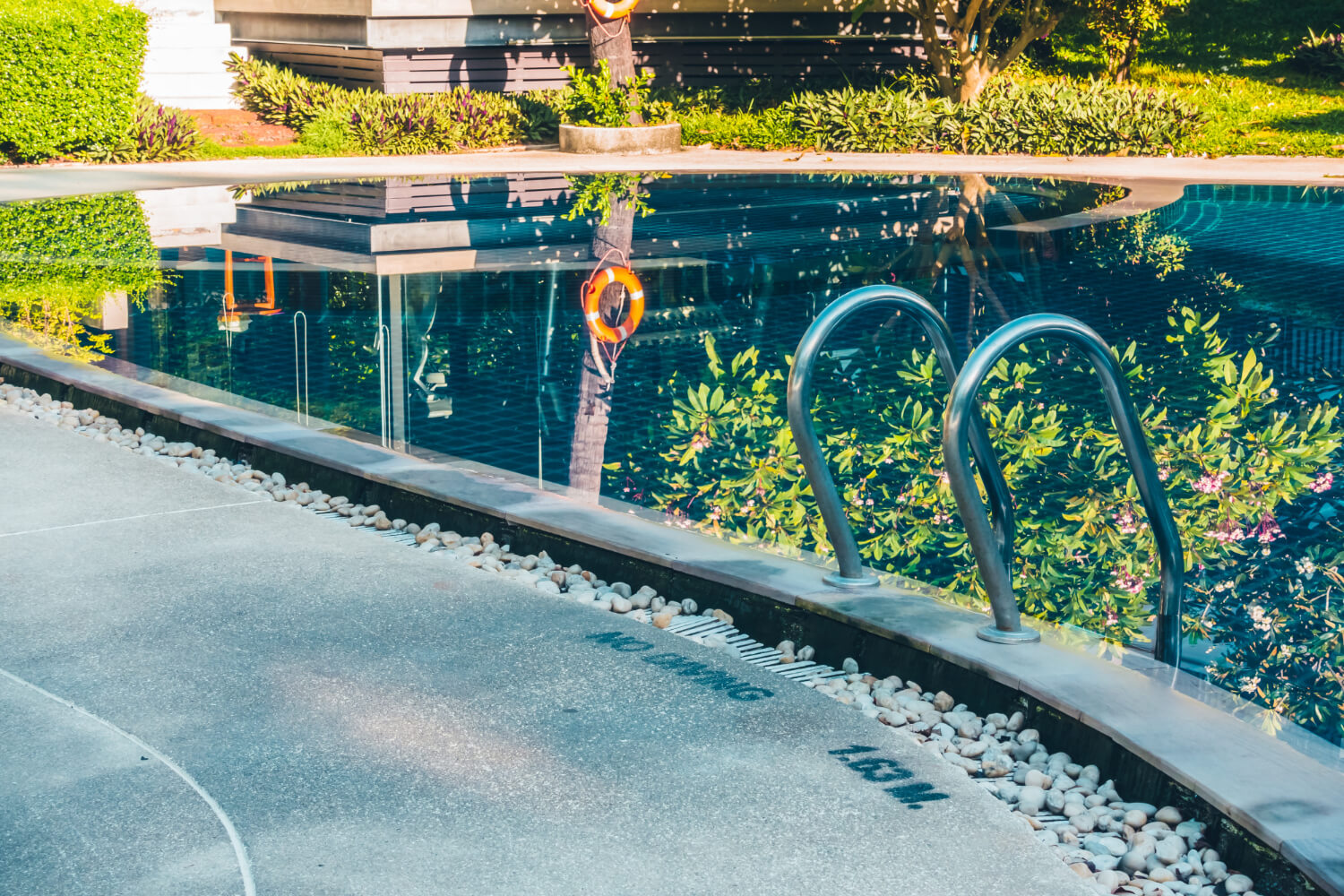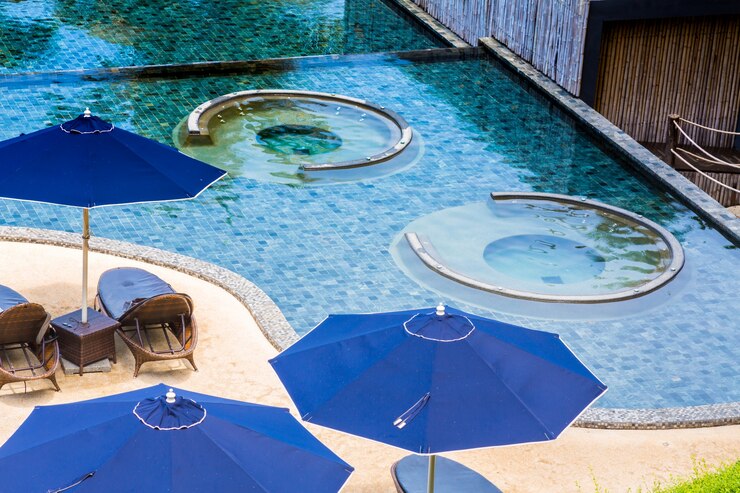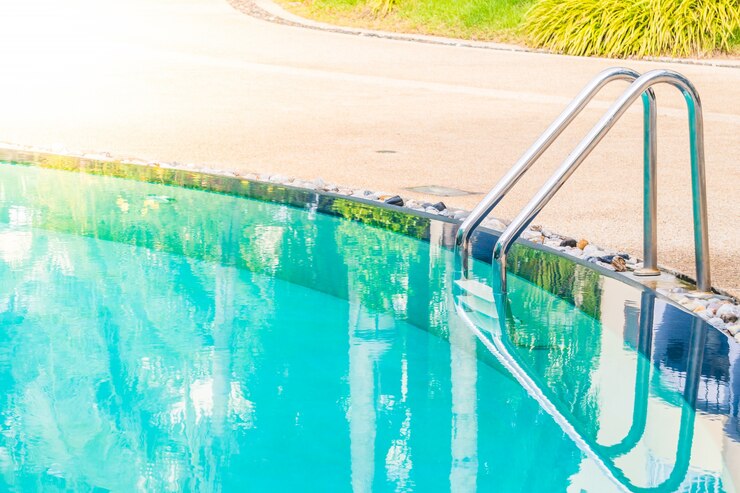Installing a pool or spa is an exciting investment that can bring years of enjoyment to your home. However, to ensure your pool remains a source of relaxation and fun, regular maintenance is essential. Whether you’ve had a custom pool constructed or installed an outdoor spa, proper upkeep can extend the life of your investment and keep your water sparkling year-round. In this guide, we’ll provide expert tips on maintaining your pool and spa after installation, focusing on essential aspects like cleaning, water balance, equipment care, and safety.

1. Regular Cleaning and Skimming
Keeping your pool clean is one of the most basic yet crucial tasks to ensure the longevity of your pool. Debris such as leaves, insects, and dirt can build up and cause blockages in your filtration system. Here’s what to do:
- Skim the Surface Daily: Use a pool skimmer to remove debris floating on the water’s surface. This helps keep your pool clean and prevents debris from sinking to the bottom, where it can be more challenging to remove.
- Vacuum the Pool Weekly: Regular vacuuming of the pool helps remove dirt and debris that may have settled on the pool floor. Depending on the pool size and usage, this task might need to be done more frequently.
- Clean the Pool Filter: The filter plays a crucial role in keeping your pool water clean. Check and clean your pool filter every few weeks or as recommended by the manufacturer to ensure optimal performance.
By keeping your pool clean, you’ll minimize strain on the filtration system and reduce the risk of algae growth or other water quality issues.
2. Maintain Water Chemistry
One of the most important aspects of pool maintenance is maintaining the proper water chemistry. The water in your pool can harbor harmful bacteria and algae if the pH and chlorine levels are not kept in check. Regularly test and adjust the water’s chemical balance, which includes:
- pH Level: The ideal pH level for pool water should be between 7.4 and 7.6. If the pH is too low, the water can become acidic, which can cause skin irritation and damage pool equipment. If it’s too high, it can lead to cloudy water and the formation of scale.
- Chlorine Levels: Chlorine helps keep the water sanitized by killing bacteria and preventing algae growth. Keep the chlorine levels between 1.0 and 3.0 ppm (parts per million) to ensure the pool stays safe for swimming.
- Calcium Hardness: Calcium helps prevent pool surface damage. If the water is too soft (low calcium hardness), it can erode pool surfaces and equipment. The optimal level is between 200 and 400 ppm.
- Alkalinity: Alkalinity helps stabilize pH levels. The recommended range for total alkalinity is between 80 and 120 ppm.
Pool construction experts often advise using professional pool service providers to regularly check and adjust the water’s chemistry, ensuring it stays balanced for maximum enjoyment and minimal wear on your pool equipment.
3. Check and Maintain Pool Equipment
Properly maintaining the equipment that powers your pool, such as the pump, filter, and heater, is essential to ensure your pool operates efficiently and safely. Regular inspection and upkeep of these components are vital. Here’s what to keep in mind:
- Inspect Pool Pump and Motor: The pool pump circulates water through the filtration system. Check the pump for any unusual sounds or leaks. Regularly clean the pump basket to ensure smooth operation.
- Clean the Pool Filter: Whether you have a sand, cartridge, or diatomaceous earth (DE) filter, make sure it is cleaned or replaced as needed. A clogged filter will make the pump work harder, using more energy and reducing efficiency.
- Check the Heater: If you have a pool heater or an outdoor spa, ensure it’s working correctly before the swimming season. A malfunctioning heater can cause discomfort and higher energy bills.
Maintaining your pool’s equipment will not only extend its life but also save on costly repairs or replacements.
4. Control Algae Growth
Algae can develop quickly in poorly maintained pools, especially in warm weather or if the water chemistry isn’t balanced. To prevent algae growth:
- Keep Chlorine Levels Stable: As mentioned earlier, chlorine is your first line of defense against algae. Keep the levels within the recommended range.
- Brush the Pool Walls and Floor: Regular brushing helps prevent algae from taking hold on the pool’s surfaces, especially in shaded areas. Use a soft brush on vinyl and fiberglass pools and a stiff brush on concrete or plaster surfaces.
- Shock the Pool Occasionally: Shocking the pool (adding a large dose of chlorine) can help kill off algae and other contaminants. This should be done every few weeks or after heavy rainstorms, when contaminants may enter the pool.
By staying proactive, you can keep your pool water clear and inviting without the need for harsh chemicals or expensive treatments.
5. Protect Your Pool During the Off-Season
If you live in a region with cold winters, it’s important to properly winterize your pool to prevent damage during the off-season. Here’s what you should do:
- Clean the Pool Thoroughly: Before closing the pool for the season, make sure it’s clean and free from debris. This will prevent mold and algae from growing during the winter months.
- Lower the Water Level: Lower the water level slightly below the skimmer to prevent damage to the skimmer or pump.
- Winterize the Pool Equipment: Drain any water from the pump, filter, and heater to prevent freezing and cracking.
- Cover the Pool: Invest in a high-quality pool cover that keeps debris out while protecting the pool’s surface.
Properly winterizing your pool can prevent expensive repairs when you open it for the next season.
6. Maintenance Tips for Outdoor Spas and Hot Tubs
If you’ve installed an outdoor spa or hot tub alongside your pool, maintenance is just as important to ensure long-term enjoyment. Here’s how to keep your spa in top condition:
- Regularly Test and Adjust Water Chemistry: Just like your pool, your spa water should be regularly tested and balanced for pH, chlorine, and alkalinity.
- Clean the Spa Filter: Spa filters should be cleaned every 1-2 months to ensure they remain effective. Replace them when necessary.
- Drain and Refill the Spa Periodically: Over time, spa water can become saturated with chemicals and contaminants. Draining and refilling your spa every 3-4 months is recommended.
Spa and hot tub construction services often include maintenance tips to ensure your new spa stays in pristine condition for years to come.
7. Check for Structural Issues
Whether you have a pool, hot tub, or both, it’s essential to regularly check for any structural issues that could indicate a problem. Look for:
- Cracks in the Pool Walls or Floor: Small cracks can lead to water loss and larger issues over time if not addressed.
- Loose Tiles or Pool Coping: Tiles and coping stones can shift or become loose. Ensure they are securely in place to avoid damage or injury.
- Leaks: A drop in water level could indicate a leak. Check the pool or spa equipment and plumbing for any signs of leakage.
Regular inspections can help you spot potential issues early, saving you from expensive repairs later on.


Conclusion: A Pool Built to Last
By following these expert tips for maintaining your pool and spa, you can ensure that your investment provides years of enjoyment. Regular cleaning, water testing, equipment maintenance, and structural checks are all part of keeping your pool in top shape. Whether you’ve chosen custom pool construction services, installed an outdoor spa, or added a built-in BBQ and fire pit, maintaining these features ensures they serve you well for years to come.
For professional pool builders and experienced pool contractors, working with a reputable pool construction company ensures that your pool and spa installation is done right from the start.
Investing time and effort into proper pool and spa care is the key to maximizing your enjoyment and minimizing the cost of repairs. Keep your pool water crystal clear, your spa bubbling, and your family enjoying endless fun in your backyard oasis.
FAQs
Q1: How often should I clean my pool filter?
It depends on the type of filter and how often you use your pool, but generally, you should clean the filter every 4-6 weeks.
Q2: Can I maintain my pool myself, or should I hire a professional?
While basic tasks like skimming and cleaning are manageable, hiring a professional pool maintenance service ensures all aspects of your pool are cared for, especially complex tasks like water chemistry and equipment maintenance.
Q3: How do I prevent algae growth in my pool?
Keep your chlorine levels stable, brush your pool walls regularly, and shock your pool periodically to prevent algae buildup.
Q4: How can I winterize my pool?
Winterizing involves cleaning the pool, lowering the water level, draining pool equipment, and covering the pool to protect it during the off-season.
5. How often should I drain and refill my hot tub?
It’s recommended to drain and refill your hot tub every 3-4 months to maintain water quality, prevent bacteria buildup, and reduce chemical saturation. Freshwater ensures hygiene, protects your equipment, and keeps your spa running efficiently. Regular maintenance like cleaning the filter and balancing the water chemistry further enhances performance and longevity.
